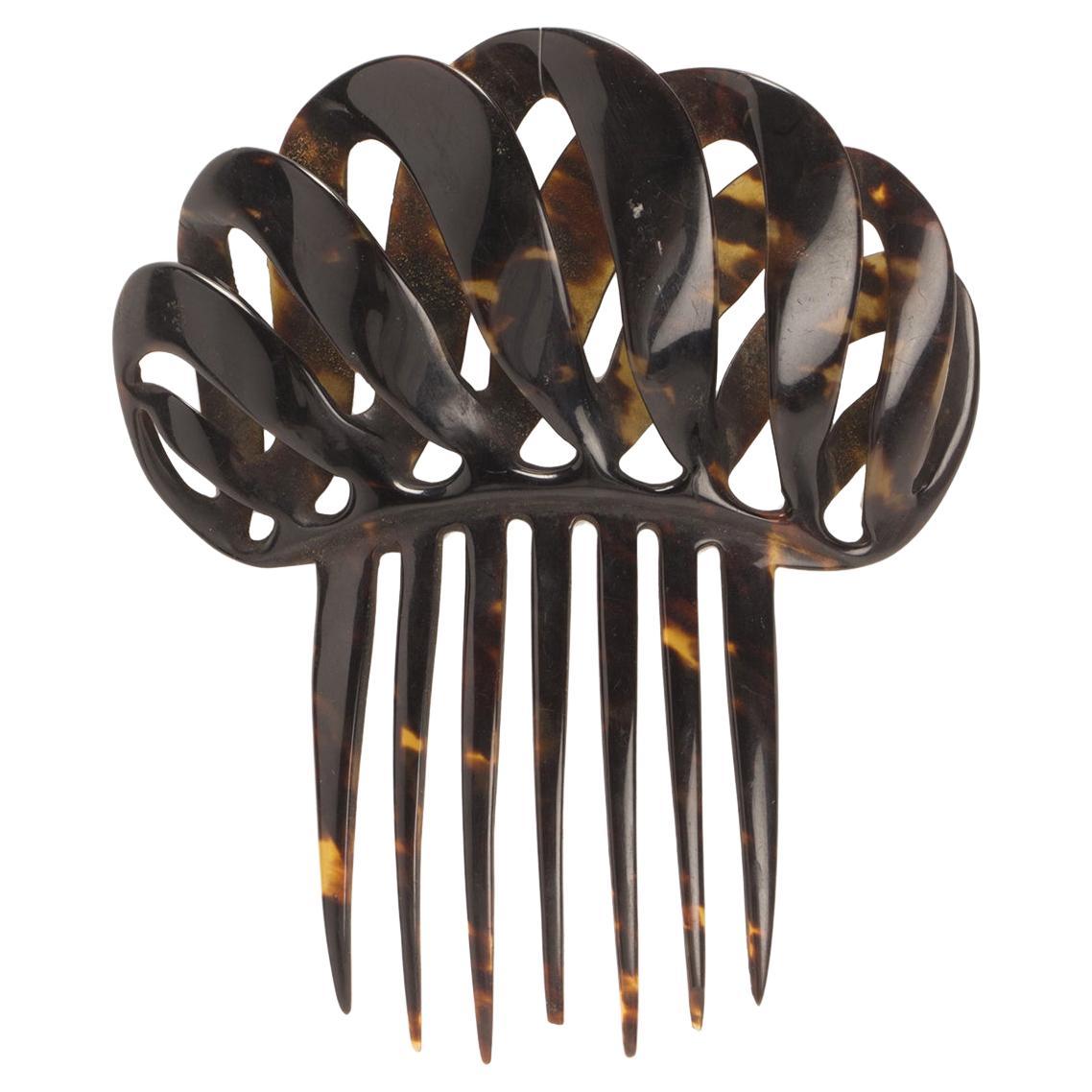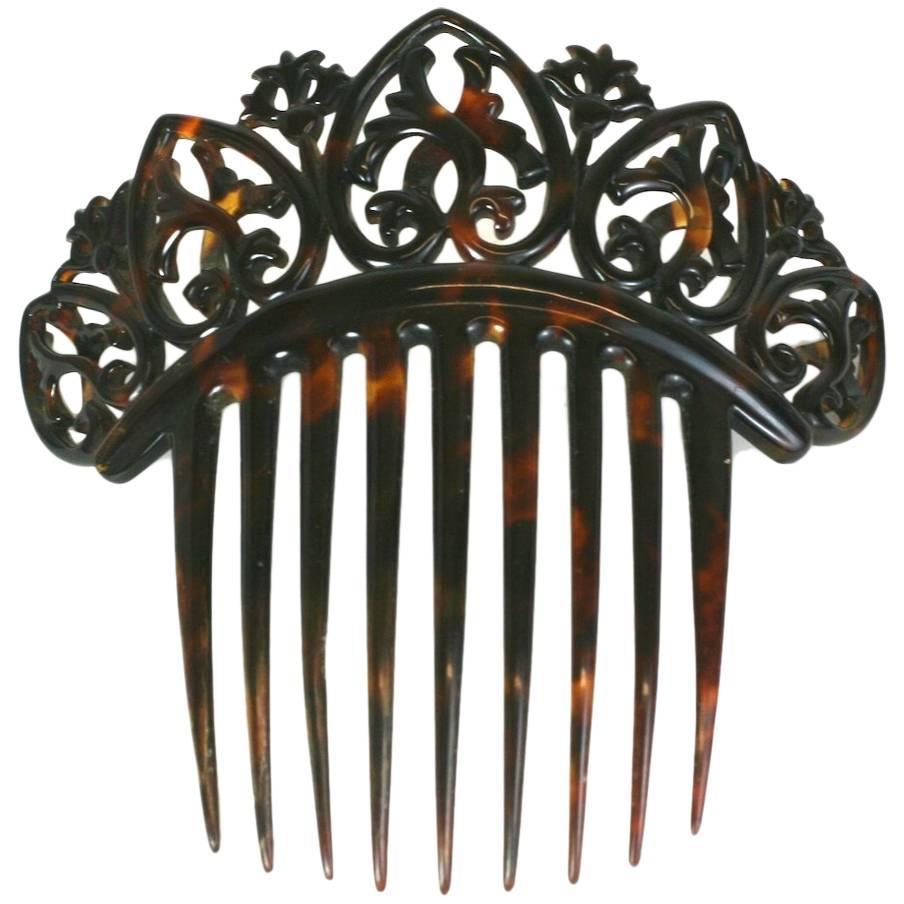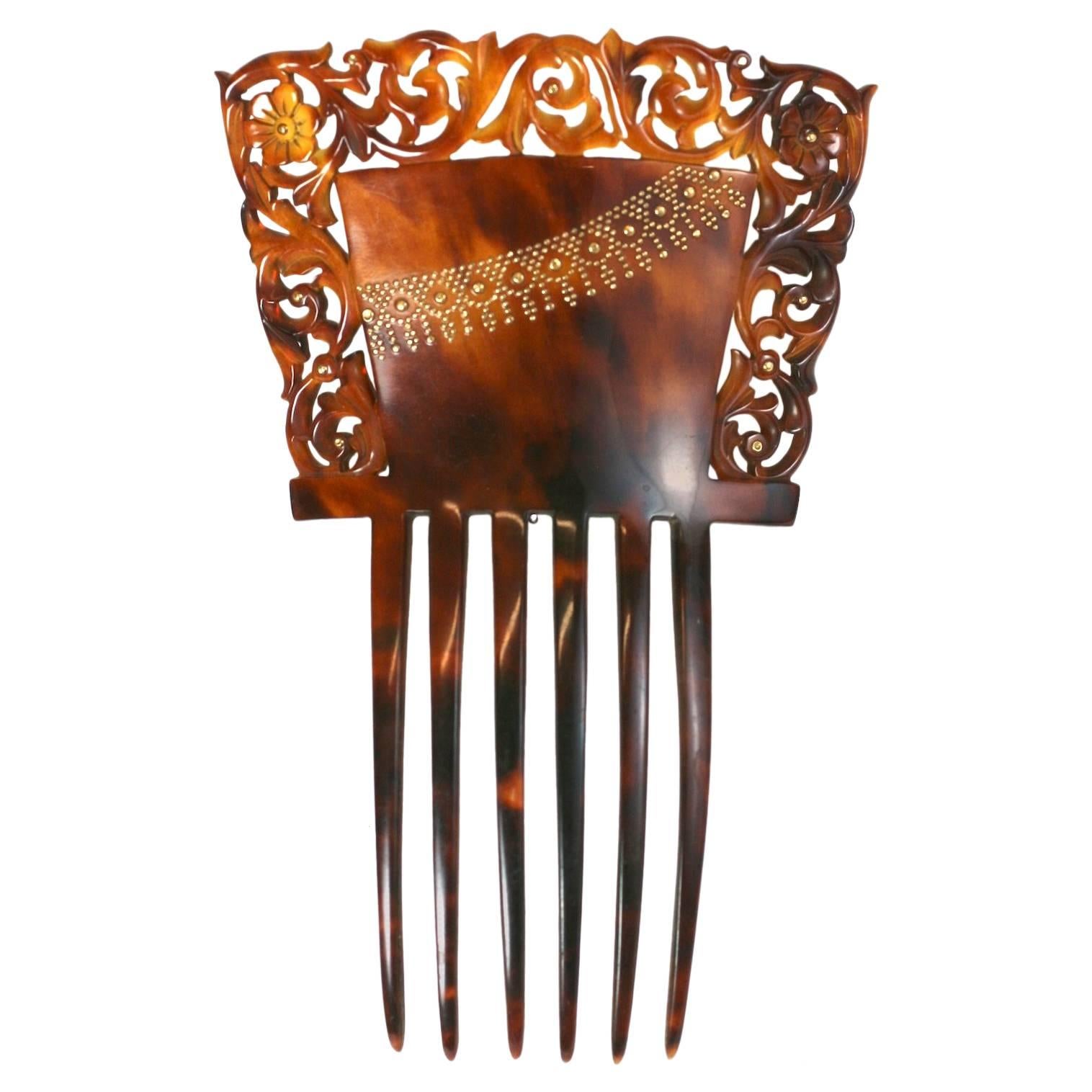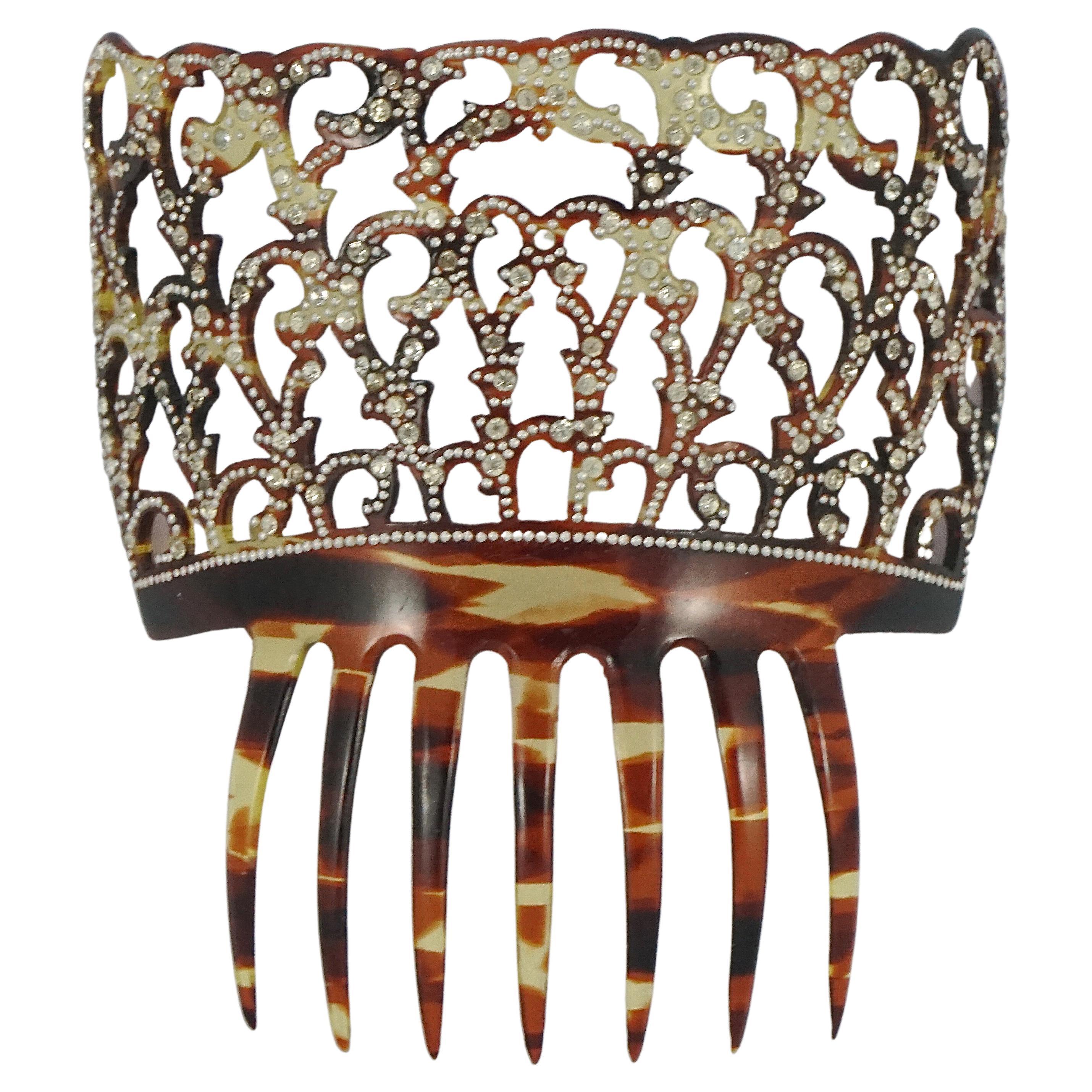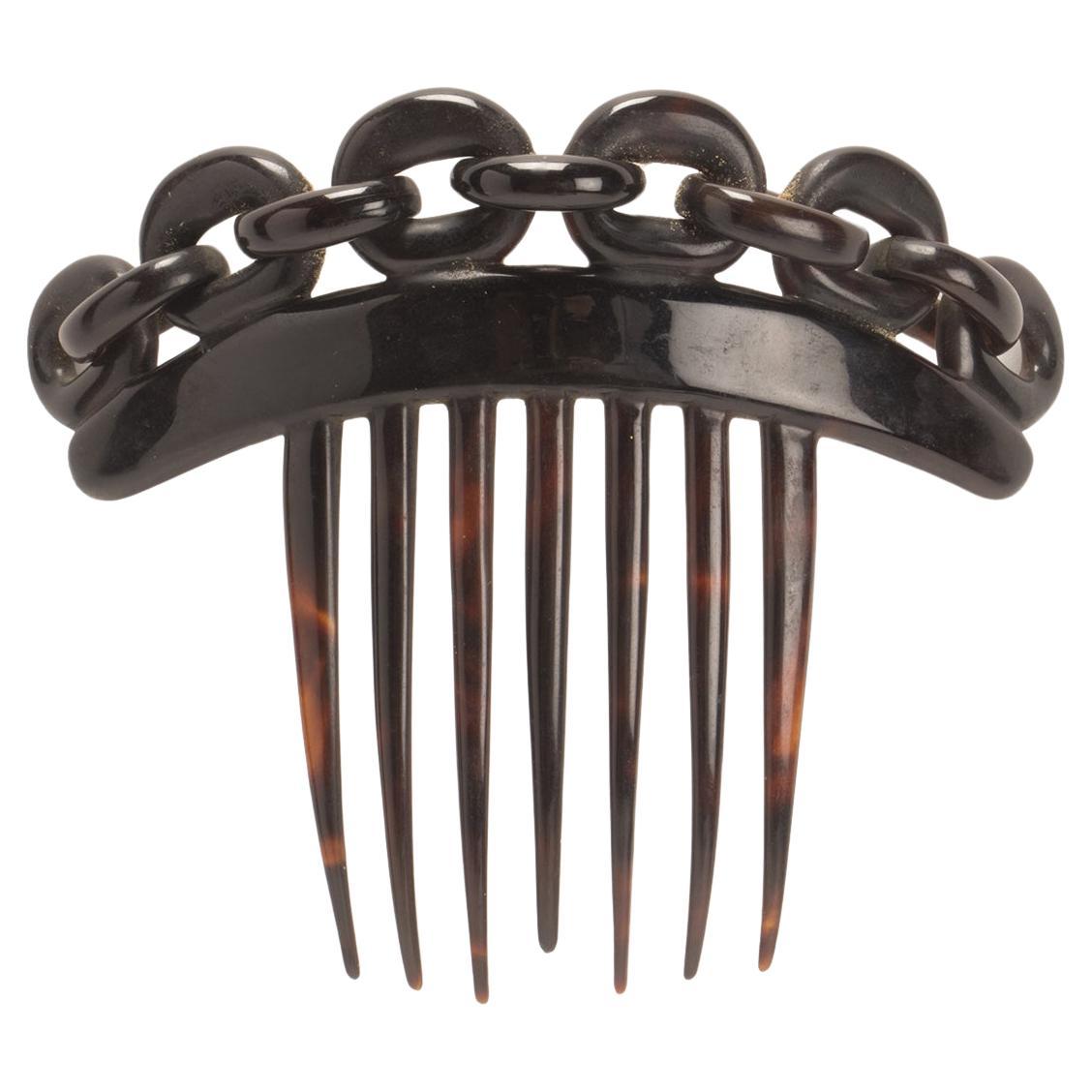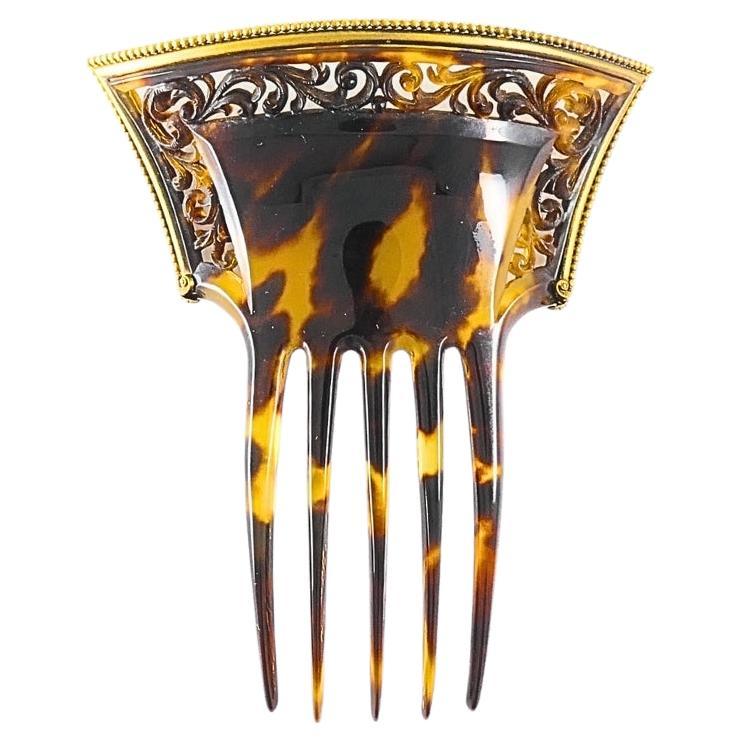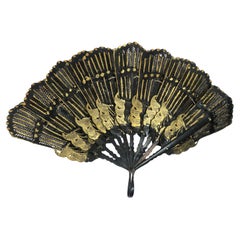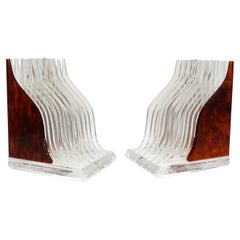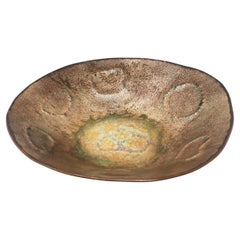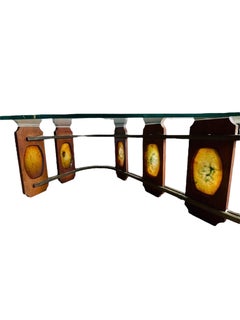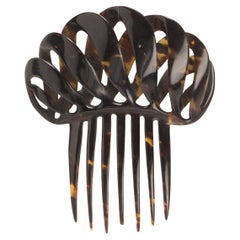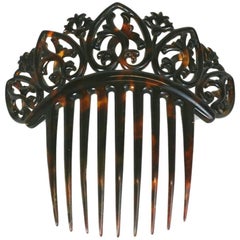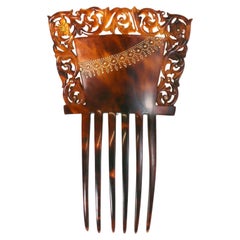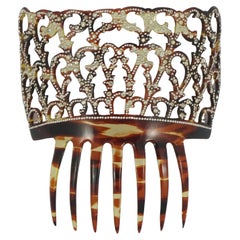Items Similar to 19th Century Tortoise Shell Decorative Hair Comb or Head Piece
Want more images or videos?
Request additional images or videos from the seller
1 of 10
19th Century Tortoise Shell Decorative Hair Comb or Head Piece
$395
£301.58
€348.47
CA$554.51
A$618.05
CHF 324.27
MX$7,547.45
NOK 4,105.98
SEK 3,880.78
DKK 2,600.81
About the Item
A stunning and large antique 19th century tortoise shell, celluloid, or Bakelite hair comb or head piece with an intricate carved floral and open scroll work design. A wonderful decorative collectors piece with Art Nouveau overtones that is in very good condition with very light wear consistent with age.
12" x 6.5" x 2"
- Dimensions:Height: 2 in (5.08 cm)Width: 6.5 in (16.51 cm)Depth: 12 in (30.48 cm)
- Materials and Techniques:
- Period:
- Date of Manufacture:circa 1850
- Condition:Wear consistent with age and use.
- Seller Location:Brooklyn, NY
- Reference Number:1stDibs: LU1546236519552
About the Seller
4.9
Vetted Professional Seller
Every seller passes strict standards for authenticity and reliability
Established in 2015
1stDibs seller since 2015
678 sales on 1stDibs
Typical response time: <1 hour
- ShippingRetrieving quote...Shipping from: Brooklyn, NY
- Return Policy
Authenticity Guarantee
In the unlikely event there’s an issue with an item’s authenticity, contact us within 1 year for a full refund. DetailsMoney-Back Guarantee
If your item is not as described, is damaged in transit, or does not arrive, contact us within 7 days for a full refund. Details24-Hour Cancellation
You have a 24-hour grace period in which to reconsider your purchase, with no questions asked.Vetted Professional Sellers
Our world-class sellers must adhere to strict standards for service and quality, maintaining the integrity of our listings.Price-Match Guarantee
If you find that a seller listed the same item for a lower price elsewhere, we’ll match it.Trusted Global Delivery
Our best-in-class carrier network provides specialized shipping options worldwide, including custom delivery.More From This Seller
View All19th Century Leather and Gold Leaf Hand Fan
Located in Brooklyn, NY
A stunning and rare example of a 19th century hand fan, made of black leather and decorated with gold leaf. The fan has a brisé style, meaning th...
Category
Antique Mid-19th Century Collectible Jewelry
Materials
Gold Leaf
Pair of Vintage Stacked Tortoiseshell Lucite Bookends
Located in Brooklyn, NY
A very special pair of vintage stacked tortoiseshell and clear lucite bookends. The design has hints of Art Deco and Hollywood Regency and is an eye-catcher in any library, office, ...
Category
Late 20th Century Mid-Century Modern Bookends
Materials
Lucite
Enameled Copper Bowl by Paolo De Poli
By Paolo De Poli
Located in Brooklyn, NY
A rare, mid-century enamel on copper decorative bowl, dish or vide poche by renowned Italian artist Paolo De Poli. Features a vibrant modernist abstract design with circular indenta...
Category
Mid-20th Century Italian Mid-Century Modern Decorative Bowls
Materials
Copper, Enamel
Authentic Kidney Shape Glass Coffee Table
By Henning Korch
Located in Brooklyn, NY
This authentic mid-century coffee table features a kidney-shaped glass top that rests on a striking base. The base is crafted from two curved brass bars and is accented with blocks o...
Category
20th Century Mid-Century Modern Coffee and Cocktail Tables
Materials
Brass
Vintage Handmade Wood Hat Stands - Set of 3
Located in Brooklyn, NY
A set of three vintage mid-century handmade hat stands. Constructed from plywood to resemble a head and face in silhouette, each sits on a plywood x-base. Made for a Long Island, New York milliner in the 1940s or 1950s to display their wares and subsequently passed down through their family to the current owner. Great as a decorative designer piece, a store or restaurant display...
Category
Mid-20th Century Mid-Century Modern Figurative Sculptures
Materials
Plywood
Elegant Chrome and Glass Art Deco Sconces, Rewired
Located in Brooklyn, NY
A chic and elegant pair of chrome and glass Art Deco wall sconces, circa 1970. Gorgeous silhouette with green edged glass. Rewired with American style...
Category
20th Century Art Deco Wall Lights and Sconces
Materials
Chrome
You May Also Like
Turtleshell hair comb-diadem, France 1900.
Located in Milan, IT
Tortoiseshell tiara comb for hair surmounted by an element decorated with tortoiseshell volutes. France circa 1900. (SHIP TO EU ONLY)
Category
Early 20th Century French Collectible Jewelry
Materials
Tortoise Shell
Elaborate Victorian Tortoise shell Comb
Located in New York, NY
Elaborate Victorian Tortoise shell Comb from the mid 19th Century. Carving is exceptional with motifs undercut from a solid piece of tortoiseshell...
Category
1860s French Hats
Lovely Tortoise Pique Comb Victorian
Located in New York, NY
Tortoise Pique Comb Victorian with gold dot decoration. The comb is carved with a floral cutwork border with a genuine gold dotted pattern inlaid diagonally across. 1870's France. Ex...
Category
1870s French Hats
Mid Century Faux Tortoiseshell Seven Prong Mantilla Hair Comb with Rhinestones
Located in London, GB
Lovely faux tortoiseshell seven prong mantilla hair comb, featuring clear faceted rhinestones and metal dot decoration. Measuring length 10.3cm / 4 inches by width 9.8cm / 3.85 inches. The hair comb is in very good condition.
This is a beautiful and stylish mid century hair...
Category
Mid-20th Century Hats
Turtleshell hair comb-diadem with chain motif, France 1900.
Located in Milan, IT
Tiara hair comb, in tortoiseshell, topped by an element, also in tortoiseshell, decorated with a sculpted chain motif sloping down from the center towards t...
Category
Early 20th Century French Collectible Jewelry
Materials
Tortoise Shell
Victorian Faux Tortoiseshell 14k Gold Haircomb
Located in Beverly Hills, CA
This Victorian hair comb features a faux tortoiseshell body paired with a 14k gold border. The top of the comb is curved to provide it a graceful s...
Category
Antique Late 19th Century Victorian Vanity Items
Materials
Gold, 14k Gold
More Ways To Browse
Antique Combs
Art Nouveau Shell
Hair Comb
Antique Celluloid
Celluloid Jewelry
Art Nouveau Comb
Antique Bakelite Collectibles
Tortoise Comb
Celluloid Comb
Tortoise Shell Comb
Antique Tortoise Shell Combs
Art Nouveau Hair Comb
Tortoise Shell Hair Comb
Antique Tortoise Shell Hair Combs
Georg Jensen 192b
Georg Jensen Brooch 376
Infant Of Prague Vintage
Jaeger Le Coultre Mens Watch
